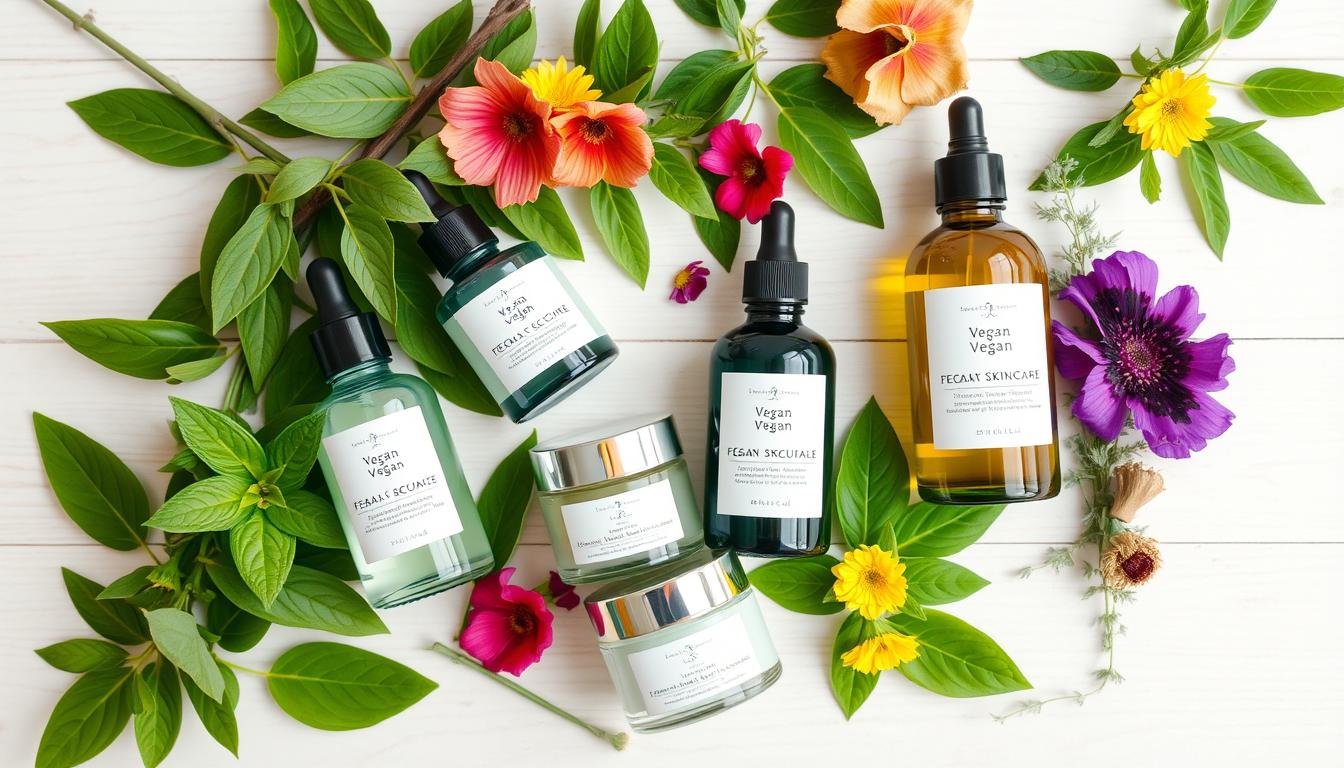How To Choose A Skincare Regimen?
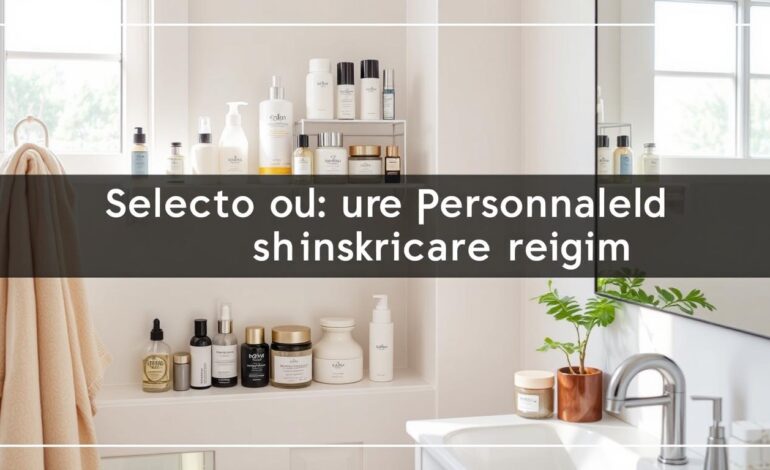
How To Choose A Skincare Regimen the right skincare is key to getting healthy, glowing skin. It starts with knowing your skin type, like dry, oily, combination, or sensitive. After figuring out your skin’s needs, you can pick the right cleansers, moisturizers, and treatments.
This article will help you create a skincare plan that fits your skin perfectly. It will guide you through the steps to build a routine that meets your skin’s specific needs.
Key Takeaways
- Identify your skin type to determine the right products for your needs
- Establish a basic skincare routine with cleansers, moisturizers, and targeted treatments
- Understand the importance of cleansing and exfoliation for healthy skin
- Utilize serums to address specific skin concerns
- Develop a personalized skincare regimen that works for your unique skin
Understand Your Skin Type
Finding out your skin type is key to a good skincare plan. Whether you have dry skin or oily skin, knowing what you need is vital. This helps you get a healthy, shiny look.
Also Read : How To Reduce Wrinkles Naturally?
Dry Skin
If your skin feels tight, flaky, or rough, you have dry skin. This type lacks natural oils and moisture. For dry skin, use soft, non-drying cleansers and moisturizers. Look for ones with glycerin and hyaluronic acid.
Exfoliating 1-2 times a week helps too. It removes dead skin cells and keeps moisture in.
Also Read : Sensitive Skin Care Tips: Nurture Your Delicate Skin
Oily Skin
Oily skin looks shiny, greasy, and has big pores. It makes too much sebum, causing clogged pores and breakouts. For oily skin, use a cleanser that removes oil and dirt without oil.
Also Read : Effective Daily Skin Care Regimen For Oily Skin
Toners and astringents help control oil. But don’t dry out your skin too much. Choose light, non-comedogenic moisturizers that won’t block pores.
Also Read : Effective Acne Scar Treatment At Home Methods
| Dry Skin | Oily Skin |
|---|---|
| Tight, flaky, rough | Shiny, greasy, enlarged pores |
| Use gentle, hydrating cleansers and moisturizers | Use oil-free, foaming cleansers and lightweight, non-comedogenic moisturizers |
| Exfoliate 1-2 times per week | Use toners and astringents to control oil production |
“Understanding your skin type is the foundation for a successful skincare routine.”
Establishing a Basic Skincare Routine
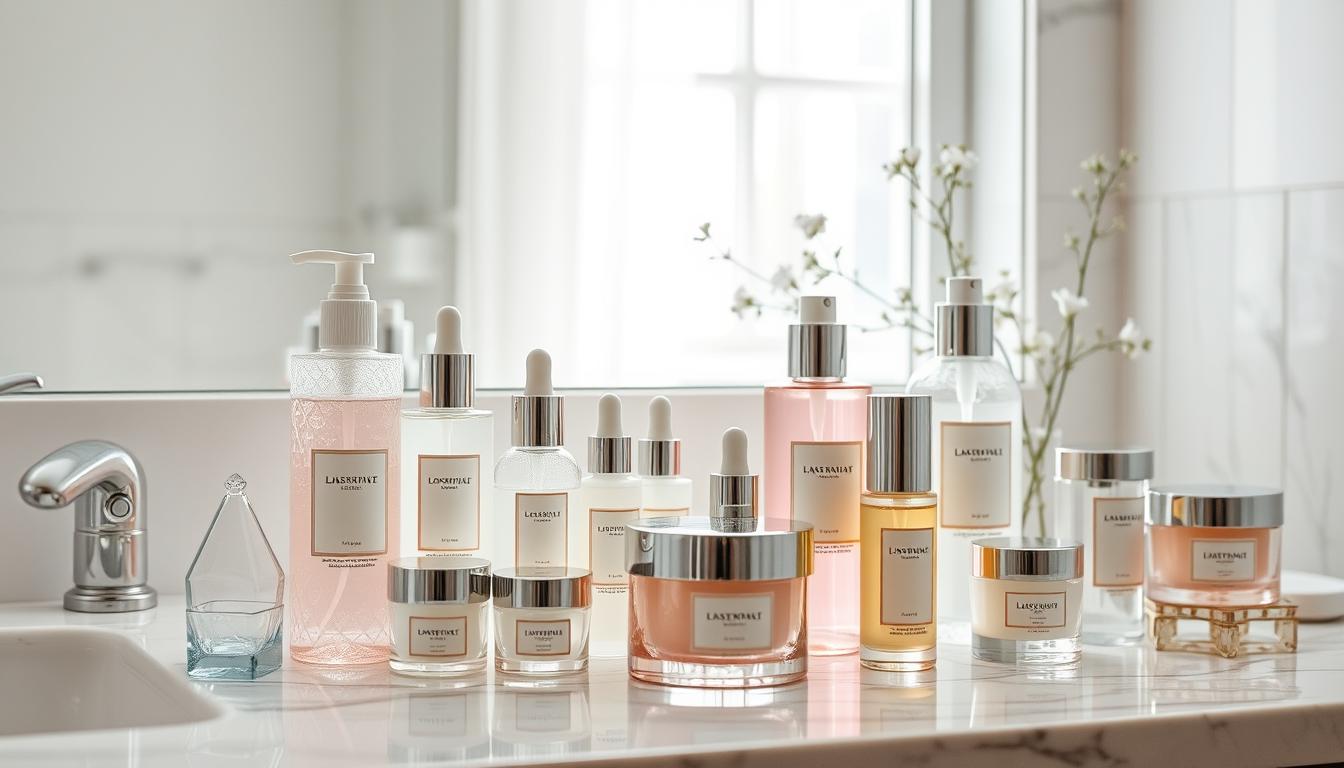
Creating a good skincare routine is key to having healthy, glowing skin. It starts with three basic steps: cleansing, toning, and moisturizing. These steps are the foundation for a beautiful complexion.
Also Read : Best Skincare Cleansers For Glowing Skin
Cleansing is the first and most important step. It removes dirt, oil, and impurities that build up on your skin. Use a gentle cleanser and lukewarm water to clean your skin well.
Toning is the second step. It refines and balances your skin. Toners fix your skin’s pH and close pores. Use a toner with a cotton pad to refresh your skin.
Moisturizing is the final step. It keeps your skin hydrated and healthy. Choose a moisturizer that fits your skin type for the best results.
When you use these steps, apply products from thinnest to thickest. This lets each product work well on your skin.
| Skincare Step | Purpose |
|---|---|
| Cleansing | Removes dirt, oil, and impurities from the skin |
| Toning | Balances the skin’s pH and prepares it for the next products |
| Moisturizing | Locks in hydration and nourishes the skin |
By following these three steps, you can start your journey to healthy, radiant skin. Remember, sticking to your routine is crucial for the best results.
Importance of Cleansing
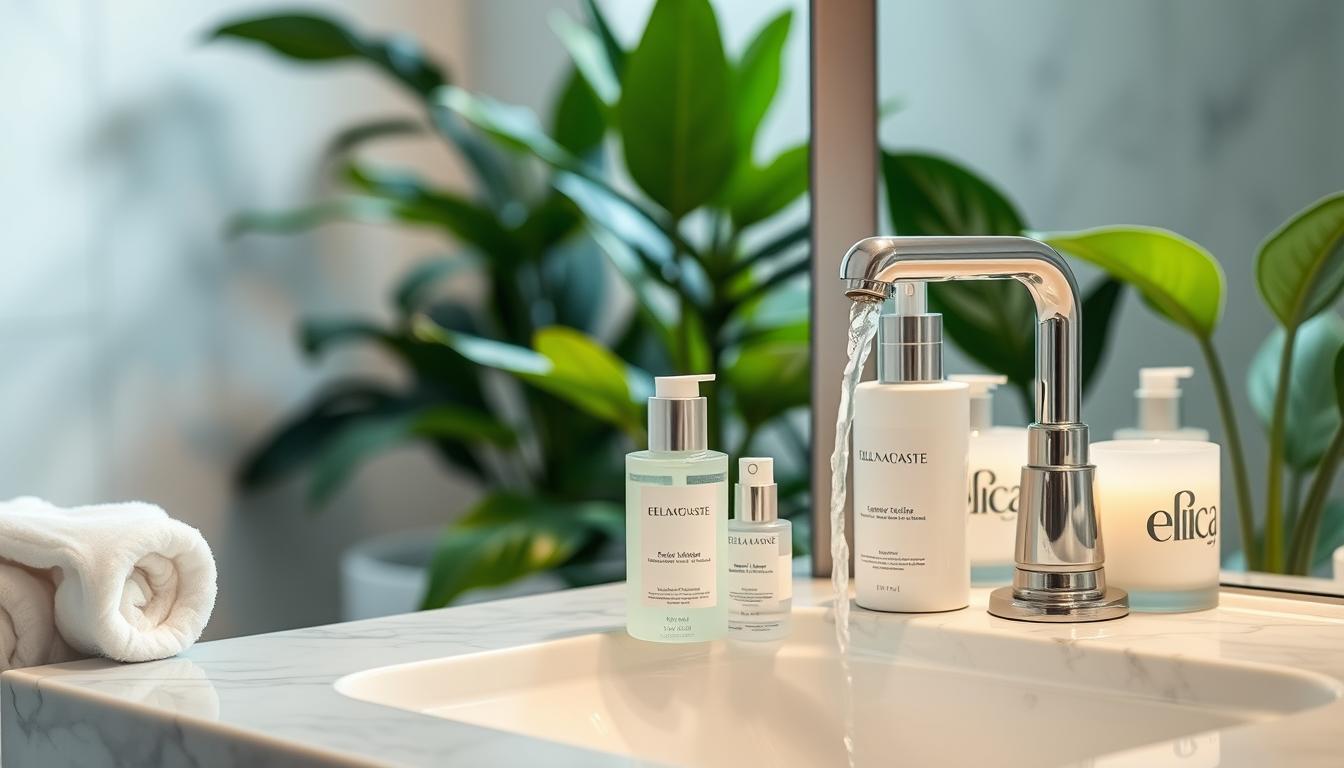
Starting with a good cleansing routine is key to a healthy, glowing face. Cleansing gets rid of makeup, sunscreen, dirt, and oil that build up on your skin all day. If you skip cleansing, your pores can get clogged, leading to breakouts and dull skin.
The importance of cleansing is huge. A good cleanse prepares your skin for the next steps in your skincare routine. It lets your skin absorb serums and moisturizers better. Cleansing also helps your skin breathe and work its best.
Choosing the right cleanser is vital for cleansing for skin health. Look for a gentle cleanser that doesn’t dry out your skin. Cleanse once or twice a day, but don’t overdo it. This can upset your skin’s natural balance.
Adding a nourishing cleansing routine to your daily care is crucial. It makes your skin clean, balanced, and radiant. By prioritizing cleansing, you ensure your skin is ready to get the most from your skincare products.
“Cleansing is the foundation of any good skincare routine. It’s essential for maintaining healthy, glowing skin.”
How To Choose A Skincare Regimen
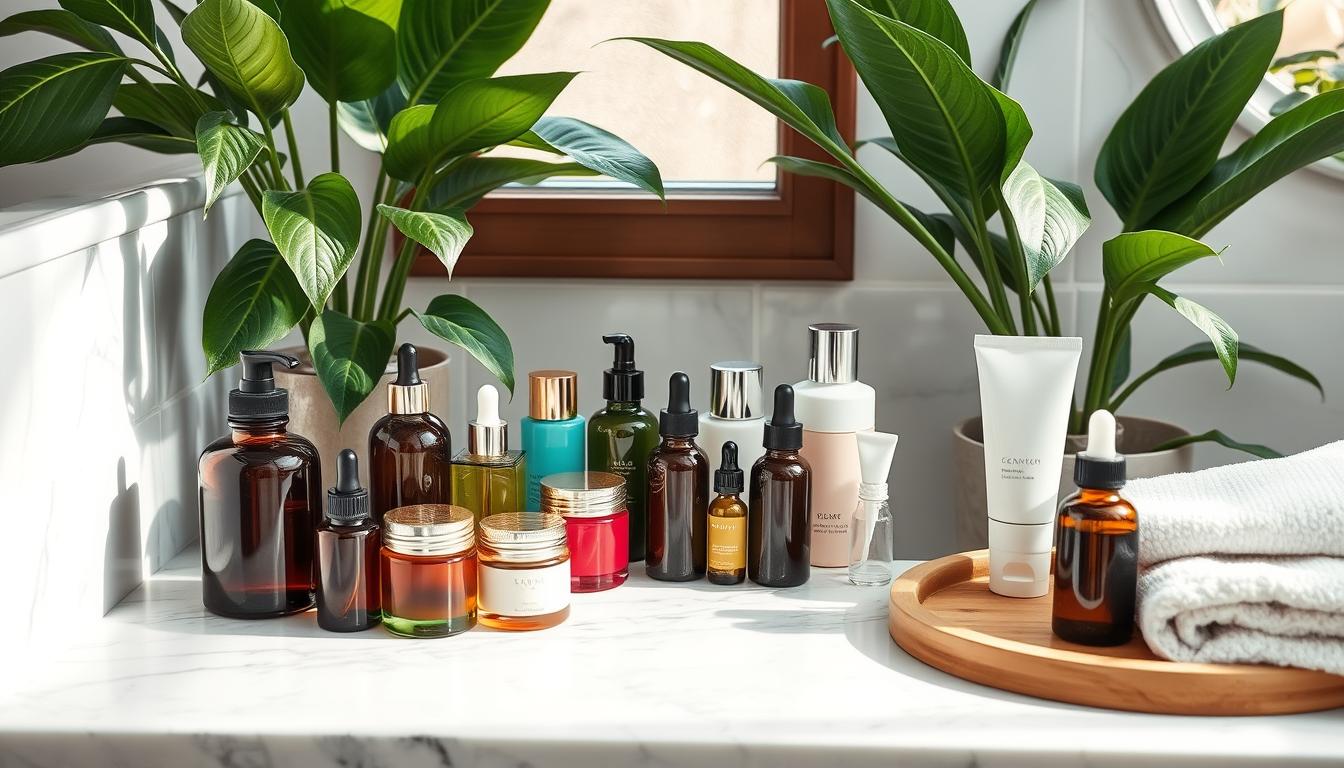
Creating the perfect skincare routine is key for healthy, glowing skin. You might want to tackle acne or hyperpigmentation, or just start a basic routine. Knowing the essential steps is crucial.
First, figure out your skin type – is it dry, oily, or a mix? This helps pick the right products for your skin. Remember, your skincare needs change with age.
Then, choose products that fit your skin goals. Look for vitamins, antioxidants, and moisturizers that tackle your issues. Start with small amounts to see how your skin reacts.
It’s important to use products in the right order. Apply them from thinnest to thickest to help them absorb better.
With some trial and error, you can create a personalized skincare routine. This will keep your skin healthy and glowing. Remember, customizing your routine is the way to reach your skin goals.
“The secret to great skin is finding the right products for your unique needs.”
Exfoliation: A Key Step
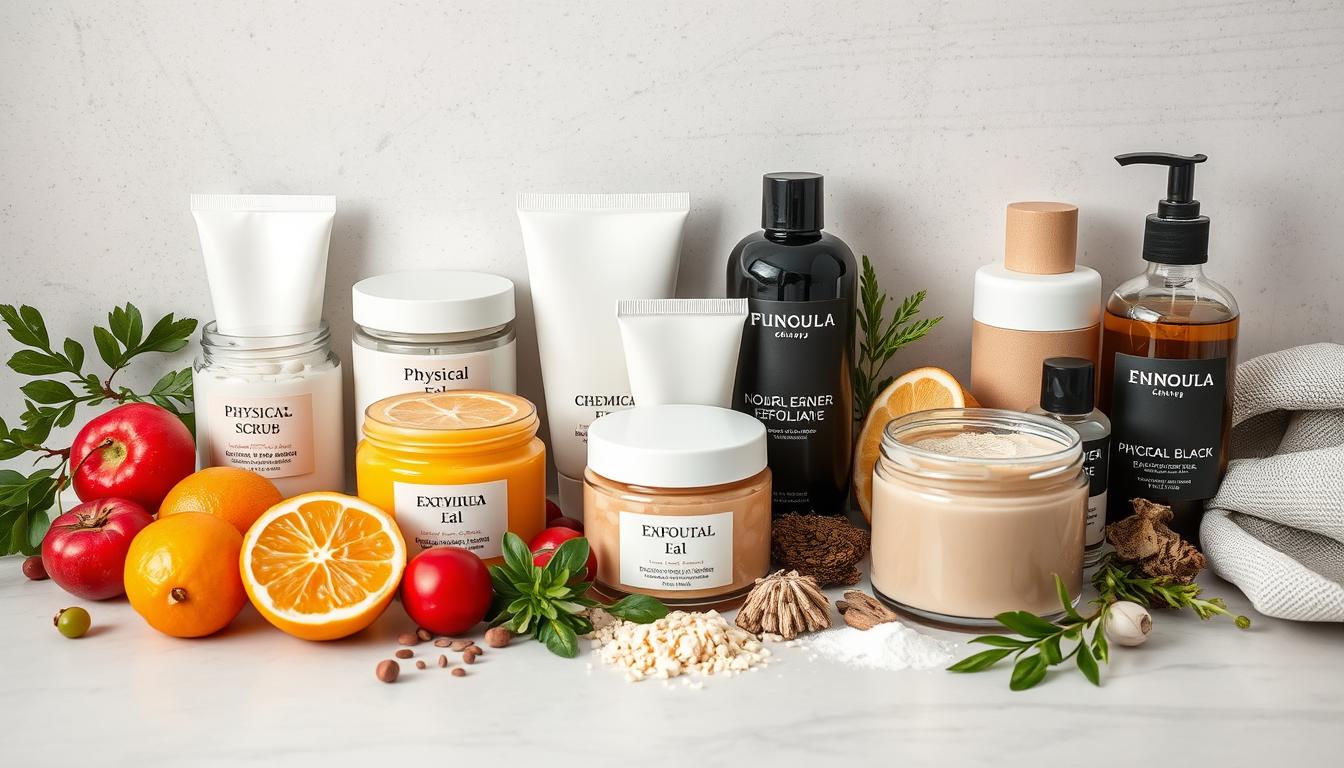
Exfoliation is a key part of any good skincare routine. It removes dead skin cells, revealing the healthy skin underneath. This process is vital for the skin’s health.
Types of Exfoliators
There are two main types of exfoliators: physical and chemical. Physical exfoliators, like scrubs and brushes, remove dead skin cells by rubbing them off. Chemical exfoliators, such as alpha hydroxy acids (AHAs) and beta hydroxy acids (BHAs), break down the “glue” that holds dead cells to the skin.
| Physical Exfoliators | Chemical Exfoliators |
|---|---|
| Scrubs, brushes, and sponges | Alpha hydroxy acids (AHAs), beta hydroxy acids (BHAs) |
| Physically remove dead skin cells | Dissolve the “glue” holding dead cells to the skin’s surface |
| Effective for all skin types | Suitable for specific skin types (AHAs for dry/dull skin, BHAs for oily/acne-prone skin) |
Exfoliate 1-2 times a week to avoid irritating your skin. Adding exfoliation to your routine can make your skin look brighter and smoother. It also helps your skincare products work better.
“Regular exfoliation is the key to a healthy, radiant complexion. It’s the foundation of any effective skincare regimen.”
Targeted Treatments with Serums
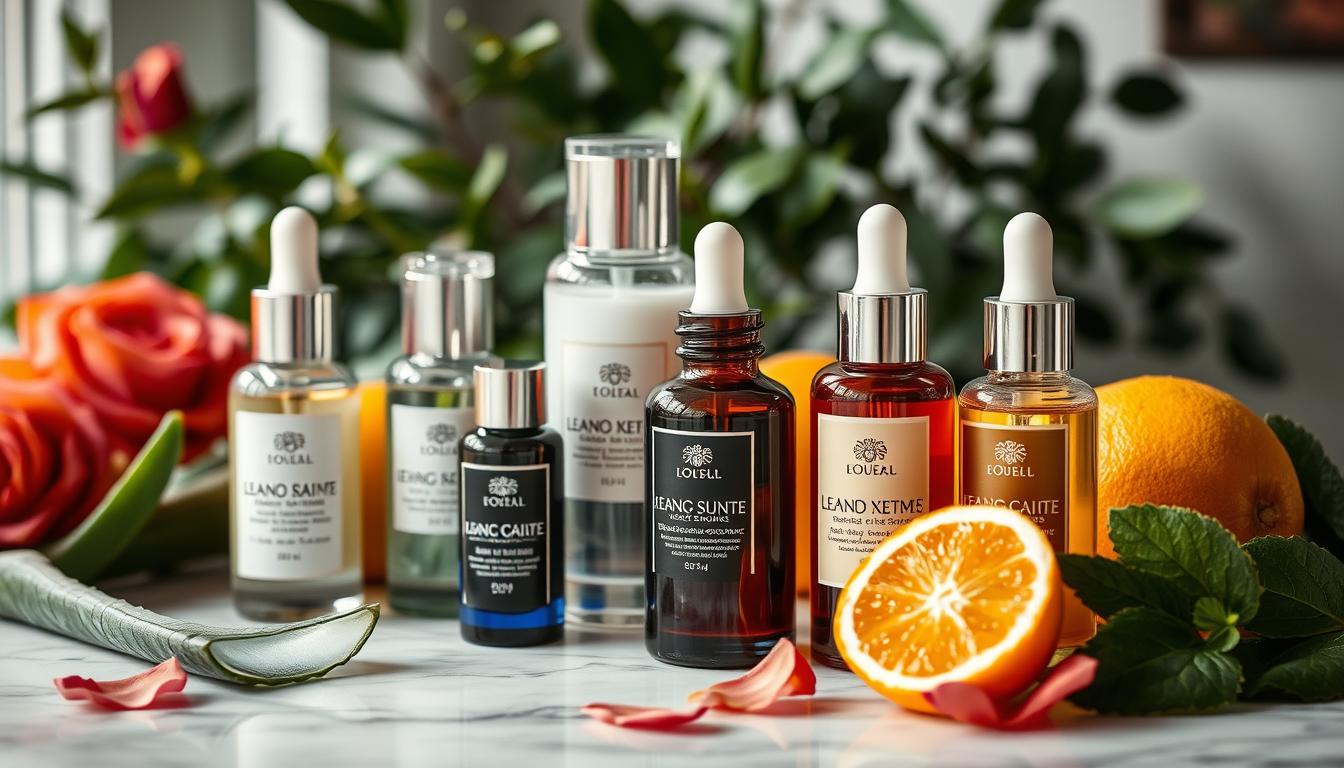
Skincare serums are strong formulas that target specific skin issues. They are filled with active ingredients like antioxidants, retinoids, and brighteners. These ingredients give your skin an extra boost.
Vitamin C is a favorite serum ingredient. It fights free radicals and lightens skin spots. Hyaluronic acid is also popular for its ability to hydrate and plump the skin. Niacinamide helps reduce inflammation and even out skin tone.
Adding a serum to your skincare routine can offer many benefits. Whether you want to reduce fine lines, fight acne, or brighten your skin, there’s a serum for you.
| Serum Benefit | Key Ingredients |
|---|---|
| Anti-Aging | Retinoids, Vitamin C, Peptides |
| Brightening | Vitamin C, Niacinamide, Licorice Root |
| Hydrating | Hyaluronic Acid, Glycerin, Squalane |
| Acne-Fighting | Salicylic Acid, Benzoyl Peroxide, Niacinamide |
When picking a serum, choose one that matches your skin concerns. Using a targeted serum can improve your skincare routine and help you reach your skin goals.
Conclusion
Creating a good skincare routine tips takes some trial and error. But, the hard work pays off with a healthy, glowing face. First, figure out your skin type and what it needs. Then, make a personalized skincare routine with gentle cleansers, spot treatments, and moisturizers.
Start new products slowly and be patient. It might take weeks to see the changes.
With the right building effective skincare regimen, you can get your best skin. Tailor your routine to fit your needs for glowing, youthful skin. Enjoy the journey and see how a good skincare plan can change you.
Finding the right mix of products and methods is key. Don’t be afraid to try new things and wait for results. With commitment, you’ll get the healthy, shiny skin you want.
FAQs
Q: How do I start to build a skincare routine?
A: To build a skincare routine, first identify your skin type and concerns. Choose skincare products that cater to these needs, such as cleansers, moisturizers, and treatments. It’s essential to follow the best order for applying your products, starting with cleansing, followed by serums, and finishing with sunscreen during the day or a moisturizer at nighttime.
Q: What are the best skincare products for mature skin?
A: For mature skin, look for products that suit your specific needs, such as those containing retinol to reduce fine lines and wrinkles, vitamin C for brightening and evening skin tone, and ceramides to support the skin barrier. Always consult with a dermatologist for personalized recommendations.
Q: How important is sunscreen in a skincare routine?
A: Sunscreen is crucial in any skincare routine as it protects the skin from harmful UV rays that can lead to premature aging and skin conditions. Always choose a broad-spectrum SPF of at least 30 and apply it daily, even on cloudy days.
Q: What should I do if I have sensitive skin types?
A: If you have sensitive skin types, choose gentle, fragrance-free skincare products that won’t irritate your skin. It’s essential to wash your face with a mild cleanser and avoid harsh ingredients. Always patch test new products before applying them to your entire face.
Q: How can I brighten my skin and reduce discoloration?
A: To brighten your skin and reduce discoloration, incorporate vitamin C serums into your routine, as they can help even out skin tone. Additionally, using products containing exfoliating acids can promote skin renewal, helping to clear away dead skin cells that contribute to uneven texture.
Q: What is the best order to apply skincare products?
A: The best order to apply skincare products is to start with clean skin after washing your face. Apply lighter products first, such as serums and treatments (like retinol), followed by thicker ones like moisturizers and oils. Finish with sunscreen in the morning or a nourishing night cream during nighttime.
Q: How can I address fine lines and wrinkles in my regimen?
A: To address fine lines and wrinkles, incorporate retinol into your skincare routine, as it aids in skin renewal and promotes collagen production. Additionally, regular moisturizing and using products that suit mature skin can help keep your skin hydrated and reduce the appearance of wrinkles.
Q: How long should I wait after applying products before moving to the next step?
A: It’s advisable to wait a few minutes after applying each product to allow it to absorb fully into the skin before moving on to the next step in your routine. This ensures that the ingredients can effectively work without being diluted or disrupted.
Q: What role does eye cream play in a skincare routine?
A: Eye cream plays a vital role in a skincare routine, especially for addressing specific concerns like dark circles, puffiness, or fine lines around the eyes. Choose an eye cream formulated for your particular concerns and apply it gently using your ring finger, as this helps prevent irritation.


